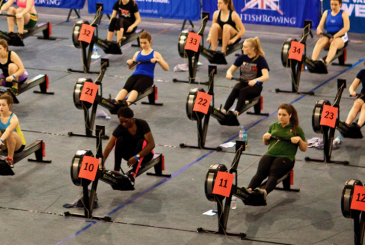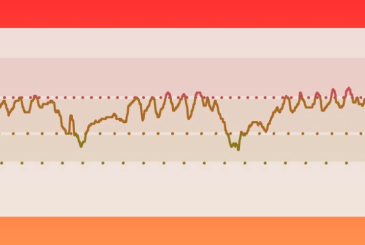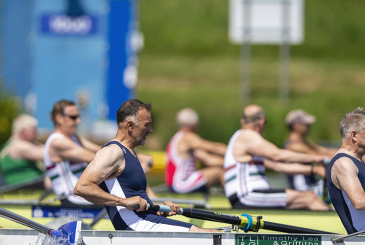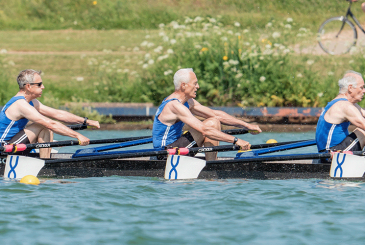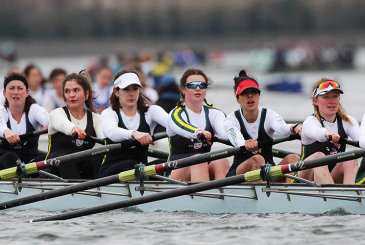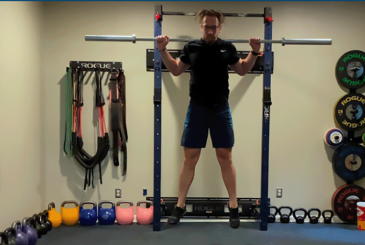How can rowers and coaches make sure that their training programme is correctly balanced? The GB Rowing Sport Science Team assess research into measuring training responses.
The science of recording what you do – or don’t do – how hard it was, and how it affects what you do next, has produced plenty of academic attention and debate. This has led to a market saturated with technologies that claim to tell you when to train and how hard you should push yourself – based on objective data.
Why monitor the training response?
Getting the maximum benefit from training should be every coach and athlete’s main aim. All sessions should contribute to increased boat speed, and in order to achieve this, the balance needs to be right. Too cautious, and you won’t expose your body’s systems to a strong enough stimulus for adaptation. Too risky, and you increase the chances of long-term underrecovery or overtraining.
So how best to monitor responses to training? Do you need a personal physiologist on hand at every session? Or are there other effective ways that coaches and athletes can use?
The research
A systematic review by Saw et al examined some objective and subjective measures of athlete well-being, in an attempt to assess the relationships between them, and their effectiveness in tracking athlete training responses. The objective measures included blood markers (hormonal, immune function and inflammatory) and heart rate (including heart rate variability) – all taken at rest, and exercising variables such as oxygen consumption and heart rate response/recovery. Comparisons were made with subjective questionnaires that aimed to measure mood disturbance, recovery-stress balance and levels of anxiety.
Looking into an athlete’s eyes and asking them the right questions may be the most effective way of assessing how they are coping with a programme
The results
The results are good news for those without a world-class physiology and biochemistry lab.
Firstly, there was little relationship between the two types of monitoring. Secondly, subjective measures (using the RESTQ-S questionnaire tool which measures stress and recovery rates) reflected both acute and chronic changes (both increased and decreased) in training load with a greater degree of sensitivity than the objective measures featured.
In other words, questionnaire answers take both recent and long-term training responses into account, whereas changes in blood and hormonal tests often reflect more immediate stresses. This is particularly useful as the symptoms of overtraining can be gradual.
So, looking into an athlete’s eyes and asking them the right questions may be the most effective way of assessing how they are coping with a programme – it is certainly cheaper!
However, questionnaires used in the review are relatively expensive and time consuming to complete. The RESTQ-S stress / recovery analysis includes approximately 50 questions, and the Profile of Mood States questionnaire (POMS) has around 65. Doing these regularly may not be feasible.
So overall, some simple, daily, subjective measures that allow for a distinction between different types of fatigue (e.g. musculoskeletal, sleep quality, emotional stress etc) are most practical.
How to measure your training programme
Keep a daily training diary and relate your scores to your programme: what you did or didn’t do and why. This will allow you to look for patterns in the data that might help you predict any gradual deterioration in performance, so you can change things around to maximise the time you have.
If you do find an objective marker that tracks your responses accurately – be consistent. Control what you can in order to minimise the effect of external variables, such as time of day, and analyse these factors alongside the questions you ask yourself or your athletes.
Here are some sample questions to consider each morning:
- How did you sleep and for how long?
- How ‘fresh’ do you feel this morning?
- How sore are your legs?
- Attitude towards training today?
- Resting heart rate/waking mass?
Choose questions that contain key words that work for you, and a suitable scale (%, 0-10 etc) then identify the ‘normal’ response to act as a calibration (e.g. 50%).
This article was first published in June 2020.



